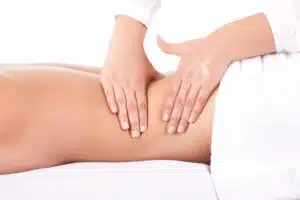Whilst we are all susceptible to the odd ache and pain, it is a far more likely occurrence in women with PCOS. In addition to irregular periods and highly painful cramps, another unpleasant symptom of PCOS is joint pain, which is the result of inflammation within the body. This can cause swollen joints, stiffness or an aching or burning sensation in different parts of the body. If not managed, this can be extremely debilitating.
So you may be wondering how you can improve your joint pain with PCOS.
Joint pain in PCOS is often linked to general chronic low-grade inflammation. Following an anti-inflammatory diet, gentle aerobic exercise, NSAID’s, heat and massage therapy can all be helpful for alleviating aching joints in women with PCOS.
What is Inflammation?
Inflammation happens when the body’s immune system reacts to a foreign substance in attempts to protect you from a perceived threat. For example – have you ever tried a new moisturiser and found that it has caused your skin to itch? Although this would be considered an allergic reaction, one of its symptoms is inflammation. Similarly, if you have been on a jog and went over on your ankle, the resulting swelling that you might see is inflammation within the affected joint. Whilst both uncomfortable and unsightly, this is your body’s way of coping with the pain and is a very natural process.
When inflammation happens chemicals from the body’s white blood cells are quickly released into the blood or surrounding tissues, which in turn increases the blood flow to the area of perceived injury or infection. This explains why the area of pain is often red looking or feels warm to the touch. Although this a natural, necessary response that helps prevent infection and keep you safe, sometimes it gets triggered for no particular reason, causing your immune system to react irrationally and in response to your own cells and tissue.
What is the Link between PCOS and Inflammation?
The relationship between PCOS and inflammation is all to do with a C-reactive protein, known by the acronym of CRP. There have been several studies showing a correlation between elevated levels of CRP and those with PCOS. Elevated levels of CRP are also associated with obesity, glucose intolerance, insulin resistance, heart disease and diabetes – conditions of which that women with PCOS are more likely to suffer from. As women with PCOS are at higher risk of obesity, this also maximises the likelihood of them experiencing joint pain due to the extra stress on the joints and tissues (1).
Unfortunately, this also puts PCOS sufferers at higher risk of suffering from Rheumatoid Arthritis (RA). This is a chronic, autoimmune disorder that primarily affects joints, causing them to be warm, painful and swollen that often worsens following periods of inactivity. Although the hands and wrists are common areas to be affected, it can also have an impact on various other parts of the body, sometimes resulting in the need for mobility assistance or medication.
RA normally develops in old age due to a weakened immune system, but studies have shown that PCOS sufferers, and those with irregular menstruation patterns or experiencing early menopause are also at risk. This then has a snowball effect: as the inflammation resulting from RA can in turn worsen other symptoms of PCOS. This is believed to be caused by RA’s links with insulin resistance which causes the development or increase of testosterone – the key hormone in PCOS that is responsible for so many of PCOS’s symptoms like weight gain and hair growth.
Do Not Suffer in Silence
It is worth noting that whilst swelling and redness are obvious indications of inflammation, it can also present itself in other ways. This includes experiencing fatigue or headaches. It can also occur within the internal organs resulting in subsequent diagnoses such as the aforementioned RA, or gout, which is another form of inflammatory arthritis. Unfortunately, this means that sometimes, inflammation can be an invisible illness that is hard to get a formal diagnosis for. This should not dissuade you from seeking medical attention, however. For example, X-rays or CAT scans can show inflammation, whilst blood tests that depict elevated levels of the C-reactive Protein (CRP) suggest that the bodies inflammatory response has been prompted (2).
However, in the meantime there are a range of helpful methods that you can be try at home which are useful to combatting joint pain. As you all know, I am a huge believer in holistic lifestyle changes and believe them imperative in treating and managing the symptoms of PCOS.
If you have experienced discomfort in your joints, read on for a list of my top seven ways to help improve joint pain:
Diet is Key – Prioritise Meal Planning

Nourishment comes from within, so revaluate your current grocery list and fill it with sustenance that belong to both a low glycaemic index (GI) diet and an anti-inflammatory diet. The glycaemic index is a rating system for foods that contain carbohydrates that shows how quickly each food affects your blood sugar (glucose) level when eaten on its own. High GI foods, such as sugary soft drinks or white bread are broken down more quickly. This causes a rapid rise in blood sugar levels that often makes you feel tired, or hungrier more quickly. On the contrary, low, or medium GI foods are broken down at a slower place promoting in turn, a much more gradual increase in blood sugar levels. Foods that contain a low GI include:
- Wholegrain food
- Grains
- Legumes
- Seeds
- Nuts
- Starchy vegetables
Foods that do not trigger inflammation are also brilliant for managing PCOS symptoms. Stay clear of refined carbohydrates, processed meats and sugary sodas and swap them for anti-inflammatory food such as tomatoes, olive oil, nuts, green leafy vegetables, fatty fish (think salmon, tuna, sardines), healthy oils and fruits such as strawberries, blueberries, oranges and cherries (3).
In addition to tasting delicious, many of these are also high in natural antioxidants that are easy to incorporate into a balanced diet. For example, a quick way to get a dose of anti-inflammatory foods is through a breakfast smoothie comprised of some of these fruits. For an extra boost, considering adding a small amount of turmeric as studies have shown that curcumin, a compound found within this spice, may reduce inflammation.
Take Omega 3 Supplements
The research shows that Omega 3 is an important supplement for women with PCOS. Not only does it help to lower testosterone levels in women with PCOS, Omega 3 also helps to manage inflammation and has a strong anti-inflammatory effect. It does this by lowering the inflammatory markers, CRP.
You’ll be pleased to hear that you will see other benefits of taking Omega 3, including:
- Lowers triglycerides and cholesterol (4)
- Improves mood and anxiety
- Improves non-alcoholic fatty liver disease (5)
- Improves egg quality and ovulation (4)
- Lowers androgens
Try Some Gentle Exercise

Aerobic exercise is best for this. Try a gentle jog around the block, making sure to pace yourself – or, if running is not your thing, go for a long walk either outside or on a treadmill, complete with your favourite podcast or playlist. Other activities to consider include cycling, swimming and jump rope.
Stock up on NSAIDS
As their name suggests, non-steroid anti-inflammatory drugs are perfect for the discomfort caused by inflammation and work by reducing the production of prostaglandin – the chemicals which cause the inflammation, fever, and subsequent pain. They are available cheaply from most drugstores and work within a short period of ingesting them.
If you anticipate participating in an activity that you know will result in a flare-up of joint pain, take the recommended dosage approximately half an hour before to reduce the predicted inflammation. It is worth always carrying a few NSAID’s around in your bag as an emergency backup – you never know when you might need them!
Massage Therapy

This allows you to relieve yourself of any tension or further stress on aching joints, and like exercise – produces feel good endorphins. As of yet, there is no clear reason as to why massage is considered relieving for sore joints, however, research has shown it boosts the happy hormone, serotonin. It also increases levels of the hormone arginine-vasopressin which may, in turn, lower blood pressure and reduce some level of inflammatory cytokine, a term used to describe the broad and loose category of small proteins that are crucial in cell signaling. (7)
If you are feeling shy about reaching out to a masseuse near you, you can try some self-massage on the affected areas of pain with the aid of a few drops of essential oils. Essential oils are derived from the scented parts of a plant (e.g. the bark, leaves and peel) and are believed to have certain healing and restorative powers for both the mind and body. Lavender oil, for example, is routinely used as the essential oil of choice in spas for massage treatments due to its intoxicating scent and perceived pain-relieving qualities.
Consider your Environment
In these unprecedented times, its likely that many of us have converted our spare room and living space into a makeshift office as we navigate how best to work from home. However, whilst an extra hour lying in is great, there are some disadvantages. The dining room chair that is substituting your normal, comfy work chair, for example, is not quite suited for spending seven plus hours a day hunched over a computer, paperwork, or telephone.
The wrong furniture can have a severe impact on our muscular-skeletal system and aggravate any pre-existing joint pain. If you are able, look for a chair especially designed for work and make sure to prioritise regular breaks. Although it is tempting to limit our activity when experiencing a flare up, often sitting in the same position for extended periods of time can be detrimental in the long run and actually worsen symptoms. Put a timer on that reminds you to take a break; for example, take a brief walk or do some gentle stretches. This will give your body some much needed respite and allow you to reflect on any pain you might be having, rather than remaining unaware, uncomfortable and working through it.
Alternate between Heat and Ice

If you are craving warmth on your sore joints, use a hot water bottle on the affected areas for 15 – 20 minutes. Similarly, if you are looking to reduce swelling apply an ice pack (or a bag of frozen peas!) for the same amount of time. If at any point the skin becomes red, irritated or sore discontinue use and seek medical attention.
Summing it Up
Aching joints are a deeply unpleasant symptom of PCOS that can have a severe impact on day-to-day life. Making those all-important dietary changes is important and you can use the other methods for symptomatic relief too. Alternatively, if you have any of your own methods you use to combat joint pain, feel free to comment below with what they are – I would love to hear from you!
- sustainable pcos weight loss strategies
- Over 5500 women have done it and seen results
- [bonus] Done for you pcos meal plans
- [bonus] intermittent fasting for pcos course
- [BONUS] personalised nutrition plan
JOIN OVER 5,500 OTHERS
1 Blumenfeld, Z. . The Possible Practical Implication of High CRP Levels in PCOS. THERAPEUTIC ADVANCES IN REPRODUCTIVE HEALTH, 2019
4 Khani, B; Mardanian, F; Fesharaki, S. Omega-3 supplementation effects on polycystic ovary syndrome symptoms and metabolic syndrome. JOURNAL OF RESEARCH IN MEDICAL SCIENCES, 2017
5 Cussons, A; Watts, G; Mori, T; et al. Omega-3 fatty acid supplementation decreases liver fat content in polycystic ovary syndrome: a randomized controlled trial employing proton magnetic resonance spectroscopy THE JOURNAL OF CLINICAL ENDOCRINOLOGY AND METABOLISM. 2009









